WHEN WOOD HOUSES BECAME EXTINCT (1909)
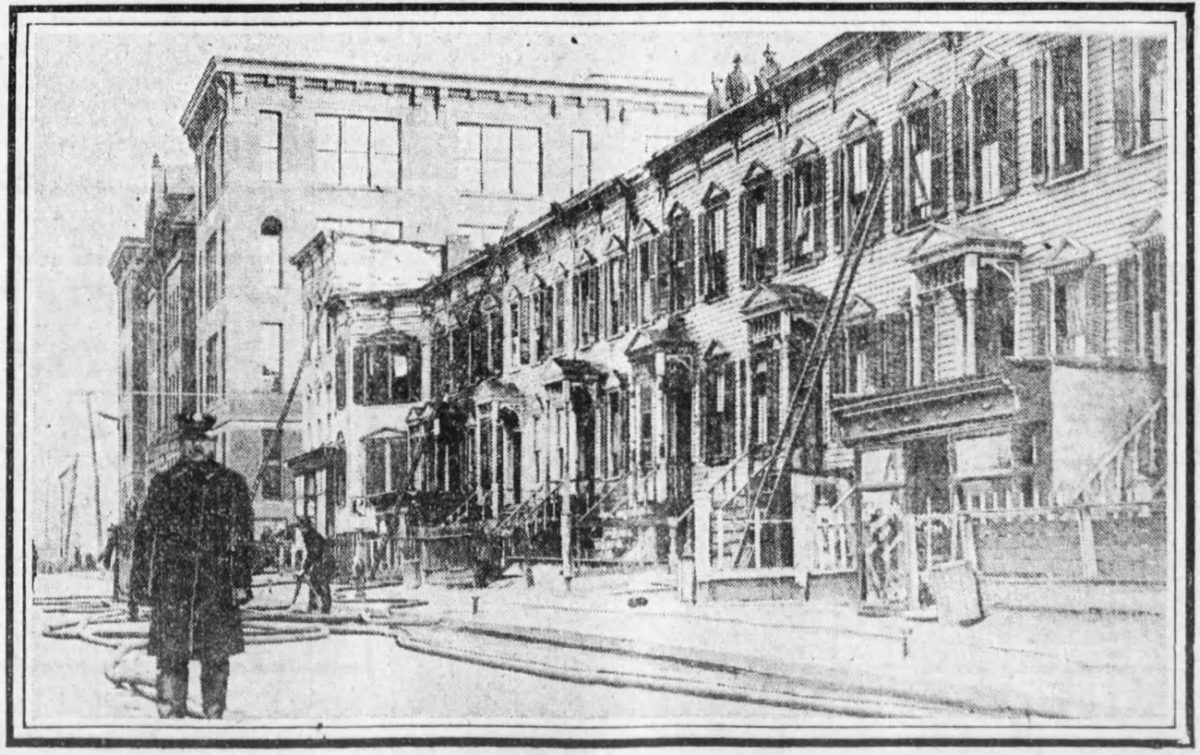
Brownstone Detectives investigates the history of our clients’ homes.
The story you are about to read was composed from research conducted in the course of one of those investigations.
Do you know the history of YOUR house?
********************************************************************************************************************************
On a cold December day in 1909, on a busy thoroughfare in Brownsville, the lives of hundreds of school children were invariably altered when a row of frame houses adjoining their school began to burn out of control.
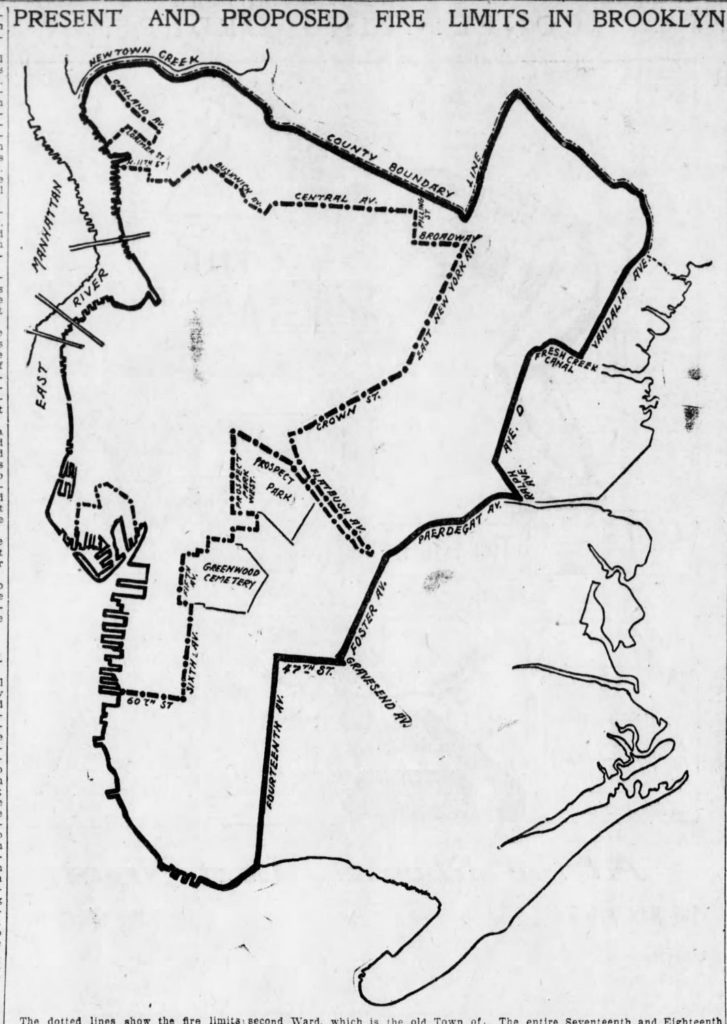
The flames “shot to the roof and then ran under the cockloft roof of ten two-story frame structures.”
“Fanned by high wind, the smoke from the burning structures enveloped the schoolhouse,” noted the Brooklyn Daily Eagle. The school, which no longer exists, sat at one time on the corner of Dumont Avenue and Powell Street – where the Van Dyke II Senior Center now exists.
The smoke enveloping P.S. 109, as the school was known, which had “accommodations for five thousand pupils,” had brought their “excited parents” by the dozens who “refused to believe at first that flames were not raging in the building.”
“So quickly did the fire eat away through the row of frame houses that many of the inmates had narrow escapes.”
That day, the city condemned at least 10 two-family houses which were housing approximately 25 families, making roughly 150 residents instantaneously homeless.
EXTENDING THE FIRE LIMITS
Advocates for the termination of the building of wood frame houses increased their pleas to city officials to extend the fire limits of the borough to its outlying districts. The borough’s building laws which went into place in many parts of the City of Brooklyn in 1890, had made it illegal to construct houses of wood within the areas closest to the downtown of what had then been the City of Brooklyn.
These limits, however, did not include (in this case) anything east of East New York Avenue, which encompassed P.S. 109, where wood-frame construction continued to take place unabated.
It was keenly understood by every lawmaker in the borough – who might push to expand the fire limits – that he would do so at his own political peril. A story in the Eagle from 1897 wryly noted that if “a New York City official should submit a bill for amending section 495 of the building laws, relating to fire limits, in such a manner that all building operations on one side of Broadway would become more expensive than those on the opposite side, it would be advisable for this official to file his resignation with such a bill.”

By 1909, however, this was exactly the scenario in which local aldermen found themselves as the cacophony of calls for an extension of the fire limits of the boroughs grew louder and louder. The proposals for an extension of the current fire limits covered everything west of Prospect Park and Greenwood Cemetery (as far south as 60th Street), then east down Crown Street and East New York Avenue to Broadway, and then roughly back to the East River by way of Central Avenue and Bushwick Avenue and other thoroughfares. They would include the districts of New Utrecht, Flatbush, Greenpoint, and East New York.
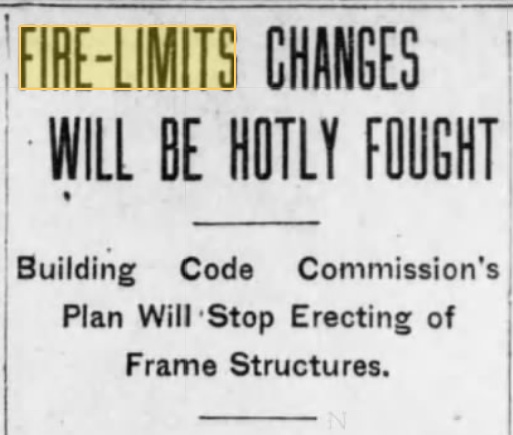
In addition to a moratorium on wood construction, it was noted that current frame buildings could not be raised to a height “in excess of 36 feet 6 inches,” ensuring that existing frame houses, which would be grandfathered into the law, which may catch fire would not be too tall for fire fighters to access.
THE DEVELOPERS FIGHT BACK!
Articles appearing in the newspapers, although they may have been opinion pieces absent the authors’ names (probably those of well-connected builders attempting to sway public opinion), fought back against such proposals, declaring how an extension of the fire limits would greatly harm the new regions that would be covered.
Not all articles, however, made this commentary, but decided that the fire limits – while expensive to implement – were an object of paramount public concern as their introduction would save countless lives. Builders, rightly so, seemed to be most agitated by the limit extensions, while those who fought the fires understood the dangers of long rows of non-fireproof structures burning like tinder boxes under the right conditions.
The fire limits, however, would not receive sufficient political support until a few years later in 1914, at which point a push to extend them throughout all five boroughs may have possibly been the most expedient and politically safe route to take for the aldermen subject to a vote on the measure.
In the end, perhaps these legislators’ consciences were assuaged by the fact that Brooklyn residents would be safer in their homes going forward. And while the extension of Brooklyn’s fire limits – to cover all of the borough – did not completely arrest the conflagrations that plague all modern cities, the halting of wood frame construction most certainly made fires – like those which, in 1909, threatened P.S. 109 – much less common.
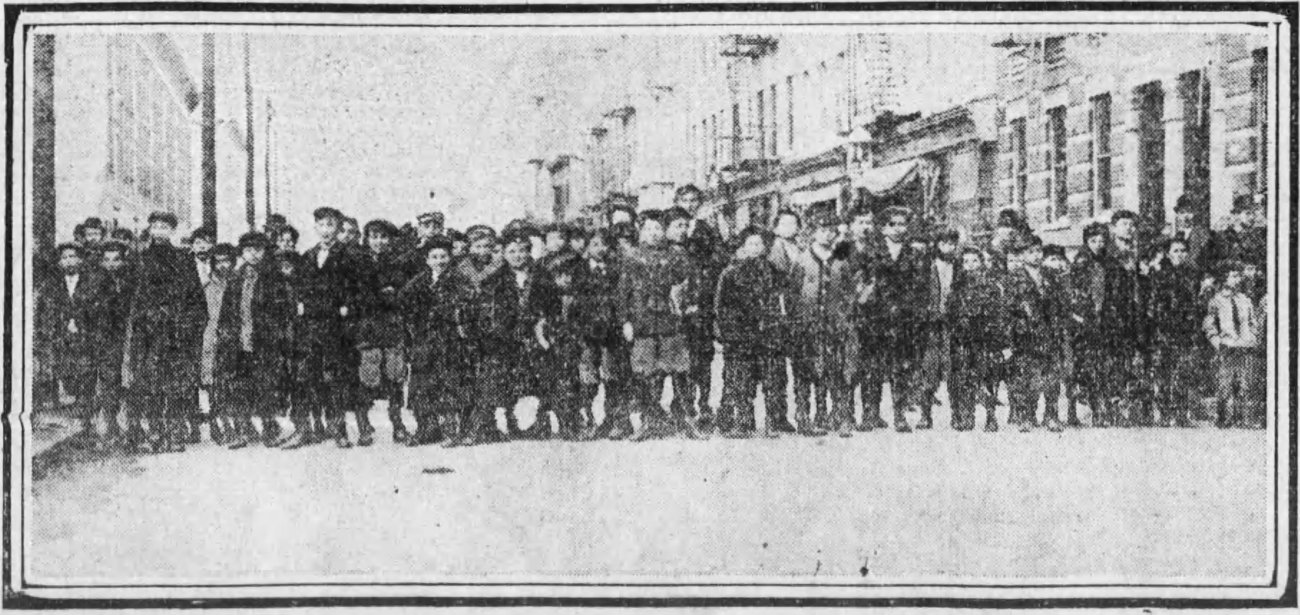
———————————————————————————————————————–
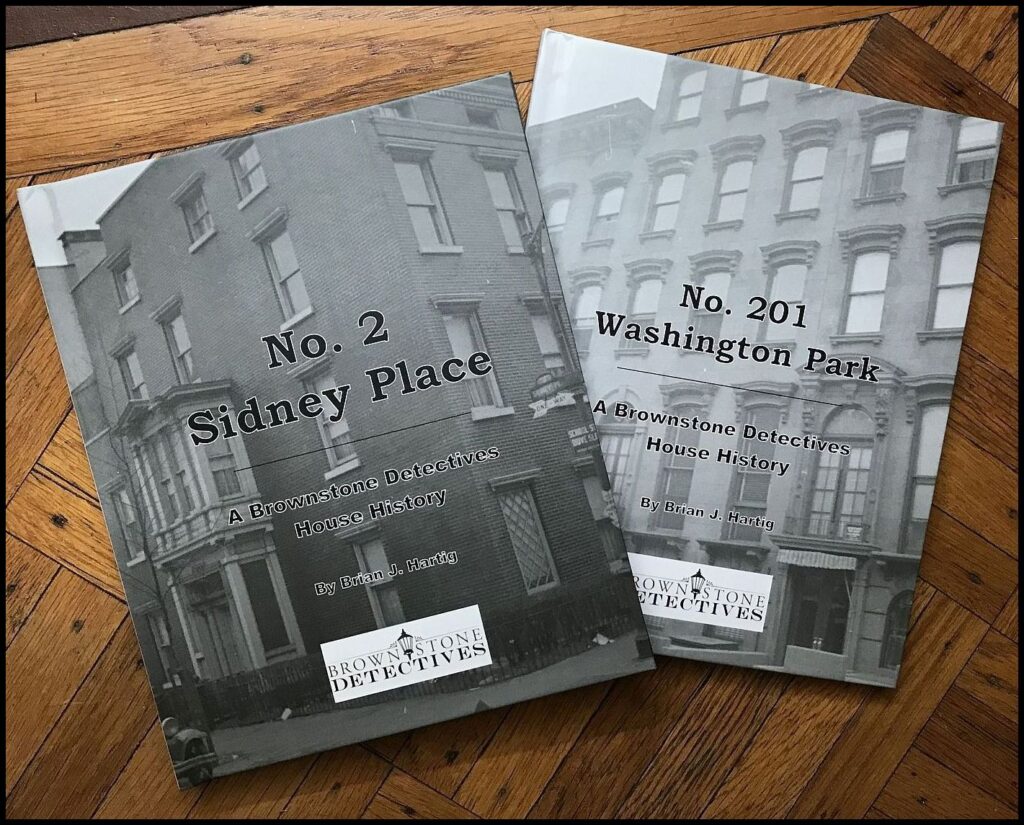 Brownstone Detectives is an historic property research agency. Our mission is to document and save the histories of our clients’ homes. From our research, we produce our celebrated House History Books and House History Reports. Contact us today to begin discovering the history of your home.
Brownstone Detectives is an historic property research agency. Our mission is to document and save the histories of our clients’ homes. From our research, we produce our celebrated House History Books and House History Reports. Contact us today to begin discovering the history of your home.